Creek fishing for largemouth bass can be both a challenge and an adventure. For anglers eager to boost their bass fishing prowess, this article shares twelve professional tips to enhance your experience.
You’ll gain insights into creek ecosystems, equipment selection, and seasonal strategies, along with practical advice on lure selection, casting, and stealth techniques. With expert guidance, you’ll embark on memorable fishing escapades that combine skill advancement and immersive enjoyment.
1. Understanding Creek Ecosystems
 Understanding creek ecosystems is your foundation for successful largemouth bass fishing. These environments differ from lakes and rivers, so it’s crucial to recognize the behaviors specific to creeks. Bass in these settings rely on the complexity of the ecosystem, using various features for feeding and shelter.
Understanding creek ecosystems is your foundation for successful largemouth bass fishing. These environments differ from lakes and rivers, so it’s crucial to recognize the behaviors specific to creeks. Bass in these settings rely on the complexity of the ecosystem, using various features for feeding and shelter.
Consider the water flow. In creeks, this is ever-changing, creating ideal conditions for bass movement based on food availability and shelter opportunities. When water flow increases, bass tend to seek slower water pockets or eddies as resting spots, making these areas prime targets for casting.
The presence of cover is also vital. Natural debris such as leaves, rocks, and aquatic plants create excellent ambush points for largemouth bass. These areas offer shade and protection, which bass use to their advantage to avoid predators and warm temperatures.
Temperature control comes next, with bass gravitating toward cooler, deeper sections during warm weather and warmer, shallower spots when temperatures drop. Creeks’ dynamic temperature zones mean that bass adjust accordingly, presenting various fishing challenges and opportunities.
Adapt your fishing strategies to align with these ecological nuances to increase your chances of a successful catch.
2. Choosing the Right Equipment
Your gear can make or break your creek fishing experience. Since creek environments are often tighter and more variable than lakes or rivers, selecting appropriate equipment is key for effectiveness and ease of use.
Start with the rod and reel combination. Opt for a lightweight rod, typically between five and six feet long. This length ensures you can navigate through tight spaces with precision. A multi-piece rod is another excellent choice for ease of transport along creek banks. Pair this with a reel that offers a smooth drag to handle sudden, strong pulls from aggressive largemouth bass.
Line choice is also crucial. Given the clear waters often found in creeks, opt for lighter lines, typically in the range of 6-8 lb test. These lines allow for subtle bait presentations and longer casts, increasing your chance of a catch without startling the fish.
Your tackle selection must reflect the creek’s diversity. Focus on compact and versatile lures that can replicate the natural prey found in creeks. Consider carrying a variety of options, such as soft plastics and crankbaits, depending on the water clarity and bass behavior you observe.
Essential Creek Fishing Gear:
- Lightweight, 5-6 ft spinning rod
- Multi-piece rod for portability
- Reel with smooth drag
- 6-8 lb test line for subtle presentations
- Compact lures like soft plastics and crankbaits
3. Seasonal Strategies for Largemouth Bass
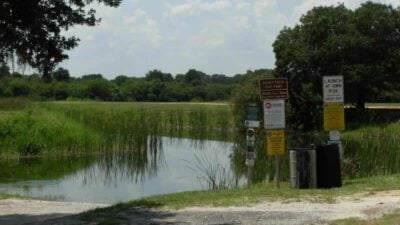 Seasonal changes significantly influence largemouth bass behavior in creeks. Tailoring your strategy to account for these variations can improve your results dramatically.
Seasonal changes significantly influence largemouth bass behavior in creeks. Tailoring your strategy to account for these variations can improve your results dramatically.
In the spring, bass are in spawning mode. Focus on shallow waters where they nest. This is an excellent time to use lures that mimic smaller fish or crawfish, often drifting close to their spawning beds.
Summer presents a different set of challenges. The heat drives bass into shaded or deeper areas, making these your primary targets. Early morning and late evening become your optimal windows, using topwater lures when the surface is active.
As fall rolls in, cooling temperatures trigger bass into feeding frenzies to prepare for winter. Fishing becomes more rewarding during this period as bass aggressively hunt for food. Utilize a mix of lures to mirror dying baitfish.
Winter slows bass movement due to colder temperatures. Success lies in patience and slower retrieval rates. Focus on spots where water temperatures are slightly warmer, such as heated inflows or sunny shallows.
Seasonal Tactics to Boost Success:
- Spring: Target shallow spawning areas with lures mimicking small fish.
- Summer: Aim for deeper or shaded spots; focus on dawn and dusk.
- Fall: Emphasize feeding patterns; use varied lures for active bass.
- Winter: Slow down and target warmer sections with methodical retrievals.
4. Reading Water for Optimal Success
Master the skill of reading water well, and you’ll unveil a treasure map of possibilities in creek fishing. Different features in the water can guide you to where largemouth bass are likely to be active.
Focus first on water clarity. In clearer waters, bass are more cautious, demanding subtle lure presentations. Adjust your tactics that amplify realism, like using natural-colored baits.
Next, pay attention to current variations. Breakpoints, such as rocks or logs, create resting spots for bass. These areas break the water’s flow, providing bass with comfortable spaces to ambush prey.
Depth changes are another crucial element. Bass often gravitate toward drop-offs where they can easily move between varying temperatures and feeding opportunities. Use this to your advantage by casting along these edges.
Stay alert to surface activity. Observant anglers recognize ripples as indicators of subsurface structures that attract bass. Also, insect activity at the surface can often point to the presence of bass feeding just below.
Reading the water with keener eyes opens up new paths to lure in the day’s biggest catch.
5. Selecting Effective Lures and Baits
Effectiveness in lure selection can mean all the difference when creek fishing for largemouth bass. Each lure has its time and place, and knowing when to switch can result in more bites and exciting moments on the water.
Topwater lures thrive in the early and late hours of the day, triggering explosive surface strikes. Quiet creek environments are perfect for these, especially when insects are bouncing on the water’s surface.
Soft plastics work fantastically in clear water conditions. Their lifelike action, especially when mimicking local prey like minnows or crayfish, can entice even the most reluctant bass to bite.
Crankbaits are your ally in murkier conditions. Use these louder, more aggressive lures that mimic the erratic movement of distressed baitfish. This visibility and noise trigger feeding instincts in bass.
When the water is slower and the current calmer, jigs can be incredibly effective. These work well around cover where movement is minimal but consistent.
Diverse Lure Options:
- Topwater lures during low-light periods
- Soft plastics in clear waters
- Crankbaits for murky conditions
- Jigs around cover and in slower water
6. Mastering Casting Techniques in Tight Spaces
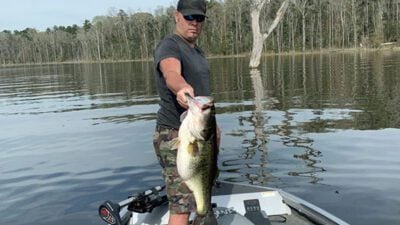 Creek environments challenge anglers to make precise casts, a skill that can significantly impact your success rate. Tight spaces call for refined technique and patience.
Creek environments challenge anglers to make precise casts, a skill that can significantly impact your success rate. Tight spaces call for refined technique and patience.
Sidearm casting is prevalent in these scenarios. It allows for a lower trajectory and precision under overhangs or between narrow openings. Mastering this can prevent snagging and reduce splash.
Pitch casting offers accuracy for placing baits gently into high-cover areas. It’s perfect when aiming for bass hiding under logs or within vegetation.
Focus more on accuracy than power. Creek fishing rewards precision casting techniques. Work on your underhand casts, which are useful for short casts in restricted creeks.
In more confined areas, consider roll casts—ideal for keeping your line low and fast, enabling you to work through dense cover or navigate tricky spots without clumsy overhead expense.
The right casting techniques transform every challenging spot into an opportunity for a fruitful fishing experience.
7. Stealth and Approach Techniques
Approaching your fishing spot stealthily is fundamental in creek fishing. Largemouth bass are sensitive to their environment, so reducing disturbances is crucial.
Wearing earth-toned clothing helps you blend into your surroundings, lowering the risk of spooking fish. This simple tweak can significantly enhance your stealth factor.
Move downstream, keeping low to maintain a low profile. This minimizes the fish’s ability to see your silhouette against the skyline. Stay mindful of shadows that might alert the bass to your presence.
Limit noise by moving carefully along creek banks. Soft steps prevent vibrations that could disturb fish. When wading, maintain a steady pace to keep water disturbance to a minimum.
Equipping yourself with polarized sunglasses enables better visibility beneath the surface. This reduces the need for constant glare adjustments, improving clarity and allowing you to spot fish without announcing your presence.
Stealth Strategies That Work:
- Wear natural colors to blend in
- Approach from downstream, minimizing visibility
- Move quietly, avoiding vibrations and surface noise
- Utilize polarized sunglasses for clear, undisturbed views
With these insights, you gain a tactical advantage, increasing your odds of reeling in a largemouth bass from the creeks.
8. Utilizing Natural Creek Features
Your ability to leverage natural features in a creek can drastically impact your fishing success. Largemouth bass often hide or hunt in these areas, making them prime locations for casting.
Fallen trees and submerged logs create natural dams that slow the current, providing bass with both shelter and food delivery. These spots often see bass lingering, lying in wait for prey.
Overhanging banks are shadows and protection zones—ideal for bass to hide from predators and ambush unsuspecting prey. Utilize this by casting your lure into these shaded areas, enticing lurking bass to strike.
Lift your eyes to rocks and boulders. They not only break the current but create calm pockets where bass can conserve energy and feed. Cast near these structures to reach bass that favor this environment.
Slower backwaters nestled next to creek runs often house feeding schools. Examine these as potential hotspots during your fishing trips, offering an opportunity to seize larger catches.
Spotting these natural structures and casting strategically near them can elevate your bass fishing experience.
9. Adjusting for Weather Conditions
Weather conditions are not just a backdrop—they actively dictate bass behavior in creeks. Adapting to these environmental cues can put you ahead of the game.
Overcast skies usually trigger more aggressive feeding behaviors as bass roam freely under the cover of clouds. Embrace these moments to deploy surface or sub-surface baits that mimic baitfish.
Wind can either be your ally or adversary. It stirs up the water, energizing the ecosystem. In moderate wind, try lures that have increased movement and visibility, like spinnerbaits, that grab bass attention.
When rain starts to trickle, it pumps oxygen into the water, compelling bass to become more active. After a long dry spell, drizzle often sees bass venturing into shallower zones, taking the opportunity to feed.
In high-pressure systems, bass may become less active. During these times, slower retrievals with soft baits may entice hesitant bass to bite, rewarding patience and precision.
Weather-Responsive Tactics:
- Overcast: Use surface or sub-surface lures for high feeding activity.
- Windy: Opt for spinnerbaits that mimic disturbed prey.
- Rainy: Focus on shallow waters as oxygen levels rise.
- High-pressure: Slow down with soft baits for less active bass.
10. Prioritizing Safety and Ethics
Fishing is about connecting with nature, and it’s our responsibility to ensure the protection of these resources. Observing safety and ethics enriches the experience and protects the environment for future generations.
Embrace catch and release to maintain healthy fish populations. Correct handling, using wet hands and gentle grips, preserves the vitality of bass after release.
Follow local fishing regulations. Adhering to these ensures ecological balance and keeps fish stocks sustainable. Regularly check your licensing and comply with local limits for each fishing spot you visit.
Prioritize personal safety with appropriate gear. Non-slip footwear and life jackets for when the creek gets deeper or more complex can prevent accidents.
Respect natural habitats. Avoid trampling sensitive areas along creek banks to help preserve ecosystems. Our shared respect for these places ensures that they remain vibrant and sustainable.
Ethical angling doesn’t just safeguard fish—it protects the very waters we treasure and our right to fish them.
11. Analyzing Creek Habitats Over Time
Fishing in the same creeks over time offers a wealth of learning opportunities. Patterns emerge as you observe bass movements and habitat shifts, guiding your efforts in future adventures.
Start with a fishing journal where you jot down details like weather conditions, successful lures, and specific catches. This reflection helps you learn what works best in certain conditions.
Accounting for seasonal changes enriches your understanding as you revisit spots, notice which areas become more productive under specific seasonal influences. Seasonal observation sharpens your instinct.
Utilize mapping software to document productive spots. This visual tracking is instrumental in identifying promising areas quickly and can be invaluable in planning future trips.
Taking note of insect and fish activity during specific times aids in matching lures to bass feeding behavior. Just like nature’s clockwork, your tackle box becomes a well-tuned tool.
Habit-Tracking Insights:
- Use a fishing journal for insights and pattern recognition.
- Observe seasonal variations to refine your strategies.
- Map productive spots for targeted future endeavors.
- Document natural activity for strategic lure selection.
12. Leveraging Local Knowledge
Local insights can be the key that unlocks hidden fishing gems. Tapping into community knowledge can lead to discovering lesser-known yet abundant creek fishing locations.
Engage with local anglers for site-specific tips. Fellow enthusiasts often share valuable advice, pointing you to sweet spots not marked on any maps.
Participate in regional fishing clubs. Building relationships within these networks creates learning opportunities and a shared passion for fishing.
Online forums can illuminate recent creek conditions or reveal fish movement patterns. Joining these discussions helps keep you informed and ready for upcoming trips.
Consider leveraging the deep insights of local guides. Their historical knowledge and experience are often unparalleled, offering direct access to both prime locations and effective techniques.
Invest in networking both on and offline. Local knowledge might just redefine your creek fishing pursuits.
The Art of Patience in Creek Fishing
Creek fishing is all about mastering the mental game. Patience and resilience will drive your success. It’s a journey of learning and adapting.
Be adaptable. Conditions change every time you fish. Trust your skills and adjust your techniques as needed.
Embrace mindfulness. Enjoy the ambiance of nature and each moment on the water. It’s about being present, whether catching fish or not.
With practice comes improvement. Every trip is a chance to advance your technique, building on the wisdom accumulated over time.
Persistence makes the journey enjoyable. Even in challenging conditions, determination to learn and improve can turn each obstacle into an opportunity.
Tap into these opportunities. Seize the moments when nature shows you hints—like sudden insect hatches—and evolve your responses to these cues.
Patience is not just about waiting; for anglers, it means cultivating foresight, embracing challenges, and honing skills. It’s what keeps us passionate about our craft.



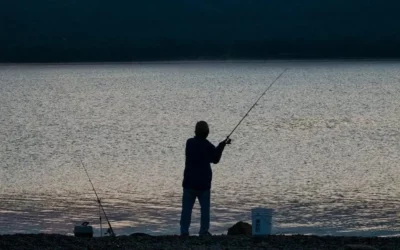
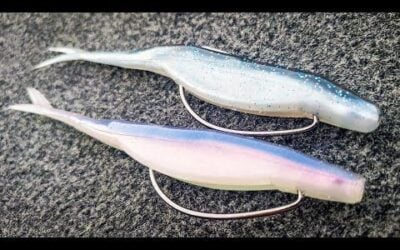
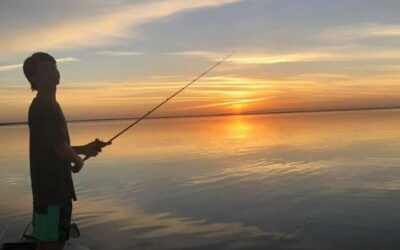
0 Comments